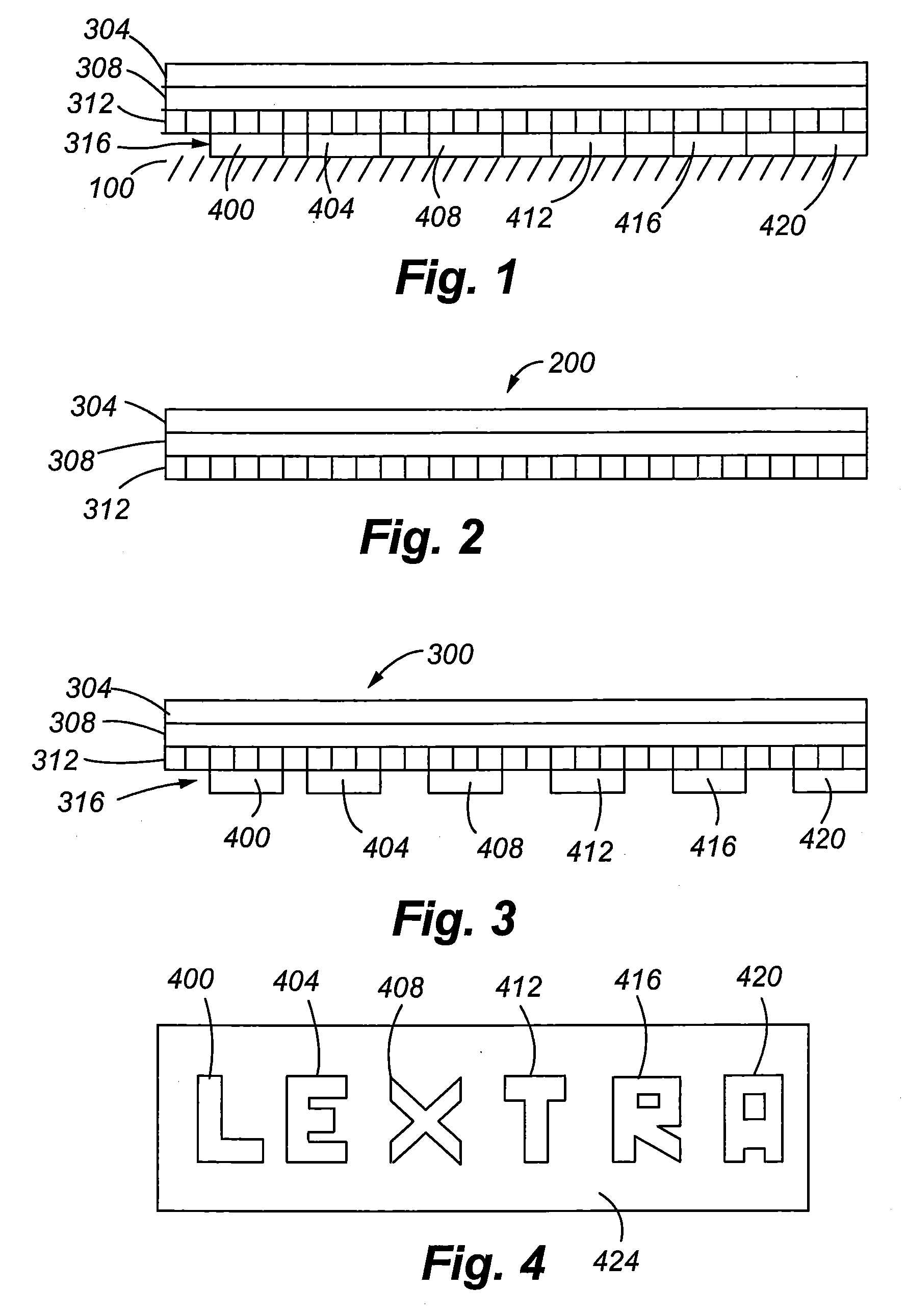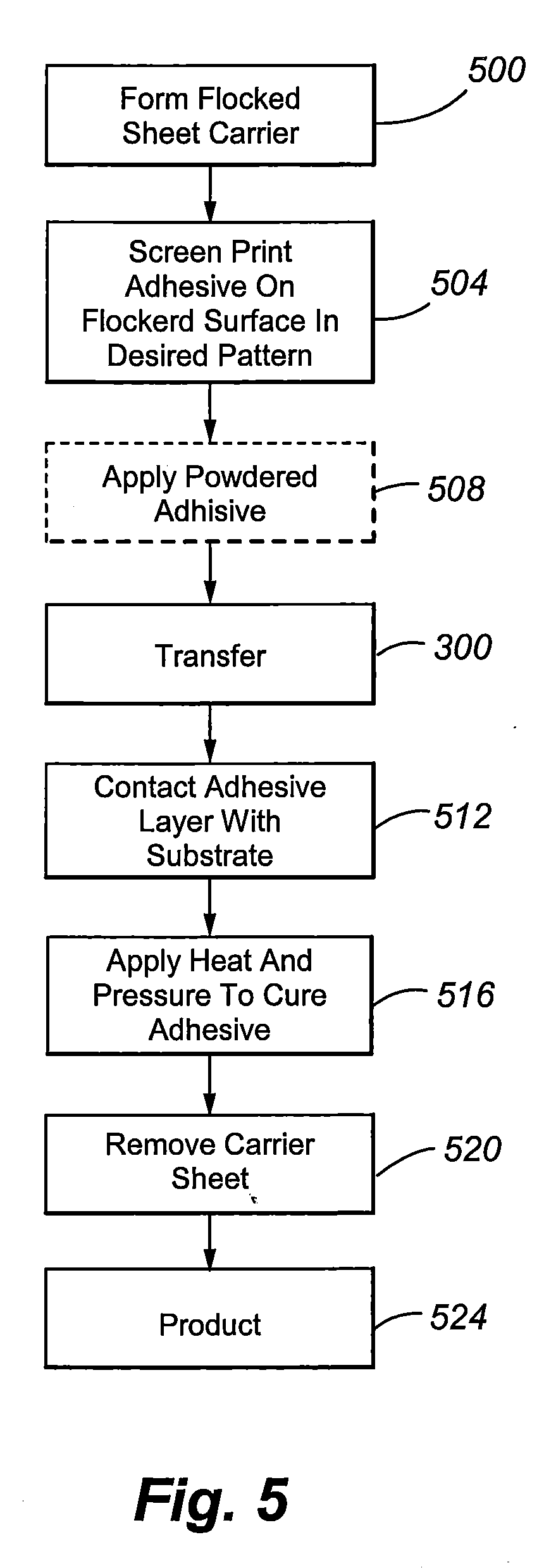Flocked slurried thermosetting adhesive article
a thermosetting adhesive and slurred technology, applied in the field of flocked articles, can solve the problems of substantial hazards for manufacturing personnel, environmental damage, and manufacturing transfer, and achieve the effect of high temperature and high resistance to wear and tear
- Summary
- Abstract
- Description
- Claims
- Application Information
AI Technical Summary
Benefits of technology
Problems solved by technology
Method used
Image
Examples
Embodiment Construction
[0034]FIG. 3 shows a flocked transfer 300 according to an embodiment of the present invention. The transfer 300 includes a carrier sheet 304, release adhesive layer 308, flock layer 312, and thermosetting adhesive layer 316. As can be seen from FIG. 3, the flock fibers in the flock layer 312 are substantially perpendicular to the planes of the carrier sheet 304 and adhesive layer 316 to provide a plush feel. To adhere the transfer 300 to a desired substrate, the thermosetting adhesive layer 316 is placed against the substrate 100 (FIG. 1) surface, and heat and pressure applied to the carrier sheet 304. The heat will soften and / or melt, at least partially, the thermosetting adhesive layer 316. When the heat is removed, the thermosetting adhesive layer 316 will adhere irreversibly to the substrate 100.
[0035]The carrier sheet 304 can be any desirable sacrificial carrier, such as cellulose (paper), microporous substrate (such as described in U.S. Pat. No. 6,025,068 and copending U.S. ap...
PUM
| Property | Measurement | Unit |
|---|---|---|
| particle size | aaaaa | aaaaa |
| melt temperature | aaaaa | aaaaa |
| melt temperature | aaaaa | aaaaa |
Abstract
Description
Claims
Application Information
 Login to View More
Login to View More - R&D
- Intellectual Property
- Life Sciences
- Materials
- Tech Scout
- Unparalleled Data Quality
- Higher Quality Content
- 60% Fewer Hallucinations
Browse by: Latest US Patents, China's latest patents, Technical Efficacy Thesaurus, Application Domain, Technology Topic, Popular Technical Reports.
© 2025 PatSnap. All rights reserved.Legal|Privacy policy|Modern Slavery Act Transparency Statement|Sitemap|About US| Contact US: help@patsnap.com



